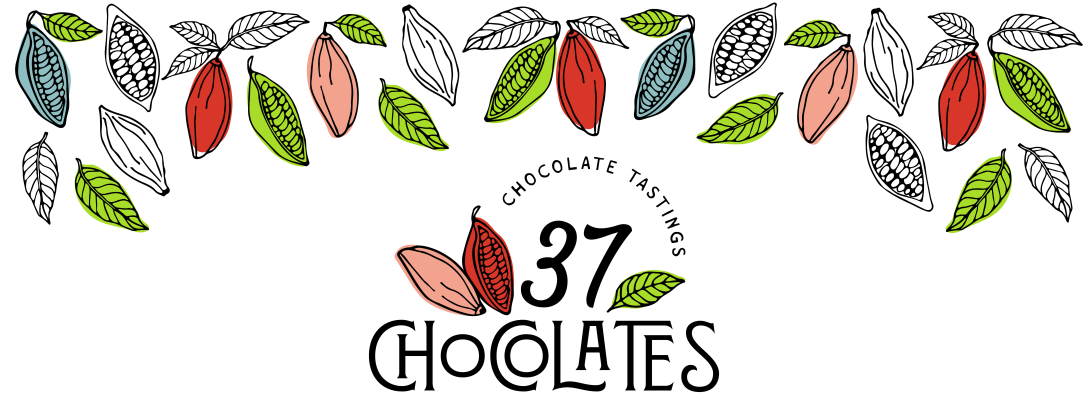
My bean-to-bar chocolate journey started back in 2015, when I reviewed 37 bars in honor of my 37th birthday that Halloween. The challenge was revelatory: who knew chocolate hid such great flavors and stories? When the project ended, I made it my mission to share what I’ve learned with a wider audience, so I launched my chocolate tasting company, 37 Chocolates, and started hosting events.
I thought people would flock to my tastings, geek out on cacao percentages and origins, and then become chocolate connoisseurs.
I was wrong.
Most people won’t pay a premium for a chocolate tasting, especially when a chocolate stash already awaits at home.
Enter wine.
People love wine. They love wine and chocolate even more.
When I first started pairing, I knew almost nothing about wine. Thanks to wine-makers, wine distributors, sommeliers, and wine books, I’ve eventually gained the knowledge and confidence to lead pairing events.
Since 2017, I’ve hosted hundreds of chocolate tastings, including dozens of wine and chocolate pairing events. Some of my clients include regional wineries, prestigious private clubs, and corporate clients like Google and LVMH.
And yet, I remember how daunting it can be to start pairing wine and chocolate. Although the frequent advice of “being open and experimenting” is accurate, it’s not helpful when you’re new to this field.
The good news is, you don’t need extensive wine knowledge to create successful pairings. What you need is a clear place to start: that’s what you’ll find in my latest e-book, The Beginner’s Guide to Pairing Wine & Chocolate.
Did I mention it’s FREE?
This resource is for craft chocolate enthusiasts and professionals like you looking to delve into the world of wine and chocolate pairings. After reading it, you’ll know what bottles to pick and which type of chocolate to get. If you can’t find a big selection of fine chocolate nearby, check my website and order the 5-bar bundle which I curated to pair with the recommended wines. Ready to start pairing? Download my new e-book here.



























